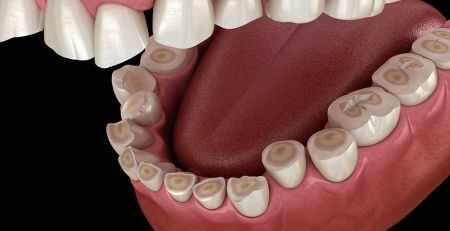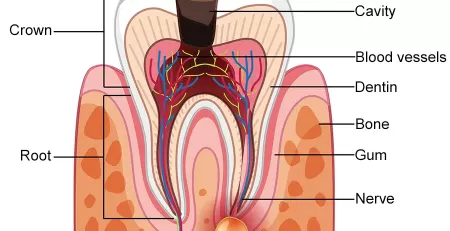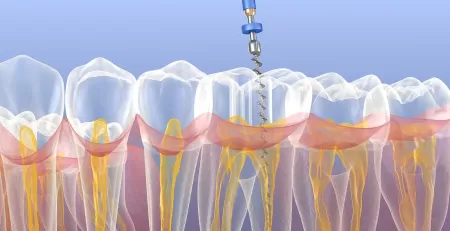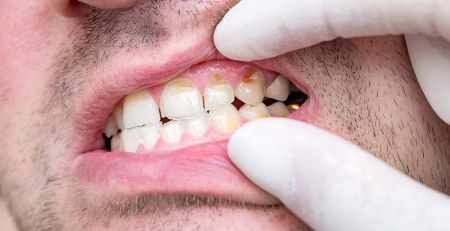Tooth extraction is a common dental procedure that may be necessary for various reasons, including impacted wisdom teeth, severe decay, or preparation for orthodontic treatment. Proper care after tooth extraction can aid in a smooth and speedy recovery. One crucial aspect of this care is knowing what foods and beverages to consume and avoid following the procedure.
Immediately After the Procedure: First 24 Hours
The first 24 hours after tooth extraction are critical in allowing the blood clot to form and healing to start.
Foods to Consume:
- Soft Foods: Stick to foods that require minimal chewing, like applesauce, yogurt, mashed potatoes, and pudding.
- Cool Foods: Cold items such as ice cream and smoothies can feel soothing on the extraction site.
Beverages:
- Water: Stay hydrated by drinking plenty of water, but don’t use a straw, as sucking can dislodge the clot.
- Avoid Hot Drinks: Hot beverages can increase swelling and bleeding.
Avoid:
- Hard or Crunchy Foods: Foods like nuts, chips, and raw vegetables can disrupt the clot.
- Spicy and Acidic Foods: Avoid anything irritating the wound, like citrus fruits or spicy dishes.
- Hot Foods: Steer clear of anything that might be too hot, as it can increase swelling and discomfort.
During the first 24 hours, the focus should be on promoting clotting and preventing any disturbance to the affected area. Adhering to these guidelines will make the recovery process more comfortable and help minimise potential complications. Always follow your local dentist’s advice and specific instructions, as individual cases may vary.
After 24 Hours: Days 2-7
As the extraction site starts to heal, you can gradually reintroduce a wider variety of foods.
Foods to Consume:
- Soft, Nutrient-Rich Foods: Foods like scrambled eggs, pasta, and cooked vegetables are gentle on the extraction site.
- Continue Cool Foods: If you experience swelling or discomfort, continue with cool foods.
Beverages:
- Avoid Alcohol: Alcohol can interfere with healing.
- Avoid Carbonated Drinks: These may dislodge the blood clot.
One Week and Beyond: Slowly Reintroducing Solid Foods
By the end of the first week, you can usually start reintroducing more solid foods.
Transition Gradually:
- Start with Soft Solids: Foods like fish, soft-cooked meat, or steamed vegetables can be a good starting point.
- Chew Away from the Extraction Site: To avoid undue pressure on the wound.
Beverages:
- Gradually Reintroduce Your Favorites: By this time, most regular beverages can be reintroduced.
General Tips for Recovery:
- Avoid Using Straws: For at least a week, as the sucking can dislodge the clot.
- No Smoking: Smoking can delay healing and lead to complications.
- Follow Your Dentist’s Advice: Your dentist may provide specific recommendations based on your situation.
What do I do if the Bleeding Doesn’t Stop After Tooth Extraction?

It’s normal to experience some bleeding after a tooth extraction, but it usually subsides within a few hours to a day. If bleeding persists after two days, it’s considered abnormal and needs immediate attention. Here’s what you can do:
- Continue Applying Pressure: Use a clean, damp gauze pad or a moistened tea bag, applying gentle pressure to the extraction site for 15-20 minutes. Remember to keep your head elevated to reduce blood flow to the area.
- Avoid Certain Activities: Avoid hot foods, vigorous rinsing, sucking through straws, smoking, or anything that might aggravate the site.
- Stay Calm: Panicking can increase your blood pressure and worsen the bleeding.
- Call Your Dentist or Oral Surgeon: If home remedies do not stop the bleeding, contact your dentist or oral surgeon immediately. They will guide what to do next or schedule an emergency appointment to evaluate and treat the issue.
- Be Weary of Medications: Certain medications can cause issues with healing after tooth extraction. These may include Blood Thinners, Non-Steroidal Anti-Inflammatory Drugs, and Immunosuppressive Medications, to name a few. You must inform your dentist or oral surgeon of any medications before dental procedures since they may affect the procedure and healing.
- Seek Emergency Medical Attention: If you cannot reach your dentist or the bleeding is profuse, head to the emergency room, which may indicate a more serious problem.
Persistent bleeding after a tooth extraction could be a sign of complications like a dislodged clot or an infection, so it’s essential to seek professional medical care if the bleeding doesn’t stop with basic home care.
Recovery from a tooth extraction is a gradual process, and your diet plays a key role in healing. Adhering to the guidelines above can promote a speedy recovery without unnecessary discomfort. If you have any concerns or specific dietary needs, don’t hesitate to consult with your nearest dentist from Amazing Smiles. Remember, proper care and attention to your food and beverage choices will have you back to your regular diet in no time.









